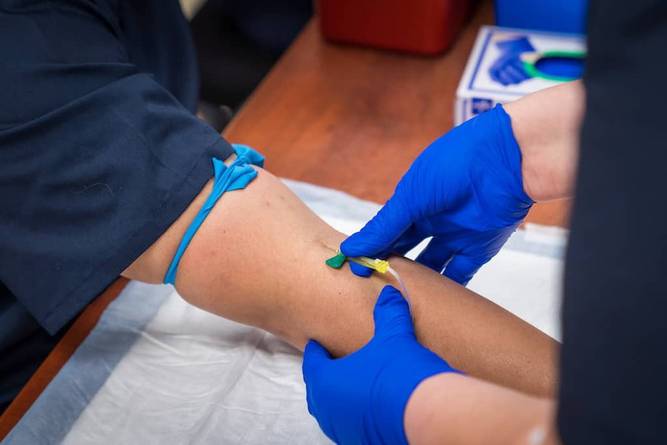In the world of healthcare, few tasks are as challenging as drawing blood from anxious or difficult patients. Whether it’s fear of needles, past traumatic experiences, or simply a bad day, healthcare professionals often find themselves navigating a minefield of emotions. This blog will provide you with effective scripts and strategies to manage these stressful situations, ensuring a smoother experience for both you and your patients. ?✨

Understanding Patient Anxiety
Before diving into the scripts, it’s essential to understand the root causes of patient anxiety. According to a study published in the Journal of Clinical Psychology, approximately 20% of patients experience significant anxiety during medical procedures. This anxiety can manifest in various ways, including:
- Verbal expressions of fear: Patients may voice their concerns loudly or repeatedly.
- Physical reactions: Sweating, shaking, or even fainting can occur.
- Avoidance behaviors: Some patients may try to leave the room or refuse the procedure altogether.
Understanding these behaviors can help you tailor your approach to each individual.
Effective Communication Scripts
Here are some scripts you can use to help ease patient anxiety during blood draws. These scripts are designed to be empathetic and reassuring, helping to build trust and rapport.
Script 1: The Anxious Patient
Patient: "I really don’t want to do this. I’m scared of needles!"
You: "I completely understand your fear. Many people feel the same way. Let’s take a moment to talk about what you’re feeling. I’m here to help you through this process. Would you like to know what to expect during the blood draw? It might help ease your mind. ?"
Script 2: The Distracted Patient
Patient: "Can we just skip this? I have a lot on my mind."
You: "I hear you. It sounds like you have a lot going on right now. However, this blood draw is important for your health. How about we take a deep breath together and focus on this moment? I’ll guide you through it step by step. ?"
Script 3: The Non-Compliant Patient
Patient: "I don’t want to do this. I’ve had bad experiences before."
You: "I’m really sorry to hear that. It’s understandable to feel apprehensive after a negative experience. Let’s talk about what happened before, and I’ll do my best to make this as comfortable as possible for you. Your comfort is my priority. ?"
Statistics on Patient Compliance
Understanding the statistics surrounding patient compliance can help you appreciate the importance of effective communication. Here’s a breakdown of some key statistics:
| Statistic | Percentage |
|---|---|
| Patients who experience anxiety | 20% |
| Patients who refuse blood draws | 15% |
| Patients who report a positive experience after reassurance | 70% |
| Healthcare professionals trained in communication | 30% |
These statistics highlight the significant impact that effective communication can have on patient compliance and overall satisfaction.
Tips for a Successful Blood Draw
In addition to using the scripts, here are some practical tips to ensure a successful blood draw:
-
Create a Comfortable Environment: Ensure the room is well-lit and free from distractions. A calming atmosphere can significantly reduce anxiety levels. ?
-
Use Distraction Techniques: Encourage patients to look away or engage in conversation about a topic they enjoy. This can help divert their attention from the procedure. ?
-
Practice Empathy: Always acknowledge the patient’s feelings. A simple "I understand this is tough for you" can go a long way in building trust. ?
-
Follow Up: After the procedure, check in with the patient. Ask how they felt and if there’s anything you can do to improve their experience next time. This shows that you care about their well-being. ?
Conclusion
Dealing with difficult patients during blood draws can be a daunting task, but with the right scripts and strategies, you can turn a stressful situation into a positive experience. Remember, effective communication is key. By understanding your patients’ fears and addressing them with empathy, you can significantly improve their experience and compliance.
For more resources on patient communication and anxiety management, consider visiting American Psychological Association or Mayo Clinic. These sites offer valuable insights and tools to enhance your skills in dealing with challenging patient interactions.
By implementing these strategies, you not only help your patients feel more at ease but also foster a more positive healthcare environment. Keep practicing, and remember that every interaction is an opportunity to make a difference! ??



